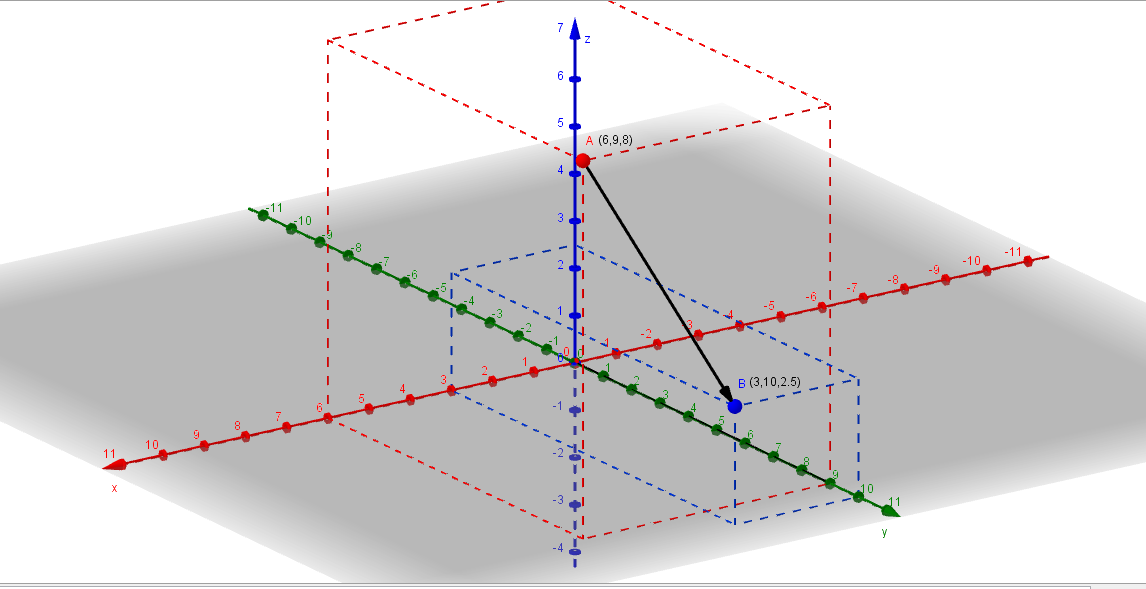So first up we need to understand the question completely. A helicopter starts at #A(6,9,3)#, and after 10 mins, it is at #B(3,10,2.5)#. We need to find the angle between the velocity vector (which would be #vec (AB)#) and the #XY# plane.
So first we need to find the velocity vector which would be #vec (AB)#:
To find the vector between two points #M(x_1,y_1,z_1)# and #N(x_2,y_2,z_2)#, use:
#vec(MN)=((x_2-x_1),(y_2-y_1),(z_2-z_1))#
So from our points, we have:
#A(6,9,3)# and #B(3,10,2.5)#
#=>vec(AB)=((3-6),(10-9),(2.5-3))#
#=>vec(AB)=((-3),(1),(-0.5))#
This vector is the velocity vector of the helicopter in terms of km per 10 minutes (as it travels from #A# to #B# in 10 minutes)
This vector would look like:

(the red dot is A and the Blue dot is B)
So we need to find the angle that #vec(AB)# makes with the XY plane.
To do this find the angle between #vec(AB)# and the vector on the XY plane which is the same as #vec(AB)#, but the #z# value is zero. Let's call this vector #a#.
#vec(AB)=((-3),(1),(-0.5))#
#=>veca=((-3),(1),(0))#
To find the angle between the two vectors #vecb# and #vecb#, use:
#costheta=(|vecb*vecc|)/(|vecb||vecc|)#
In this equation, the numerator is the modulus of the dot product and the denominator is the length of each vector.
So when we are finding the angle between #vec(AB)# and #veca#, we would use:
#costheta=(|vec(AB)*veca|)/(|vec(AB)||veca|)#
#=>costheta=(|((-3),(1),(-0.5))*((-3),(1),(0))|)/(|((-3),(1),(-0.5))||((-3),(1),(0))|)#
#=>costheta=(-3*-3+1*1+-0.5*0)/(sqrt((-3)^2+1^2+(-0.5)^2)sqrt((-3)^2+1^2+(0)^2))#
#=>costheta=(9+1+0)/(sqrt(9+1+0.25)sqrt(9+1+0))#
#=>costheta=10/(sqrt10.25sqrt10)#
#=>costheta=10/(sqrt(10.25*10)#
#=>costheta=10/sqrt102.5#
#=>theta=cos^-1(10/sqrt102.5)#
#=>theta~~8.98# (to two s.f.)

